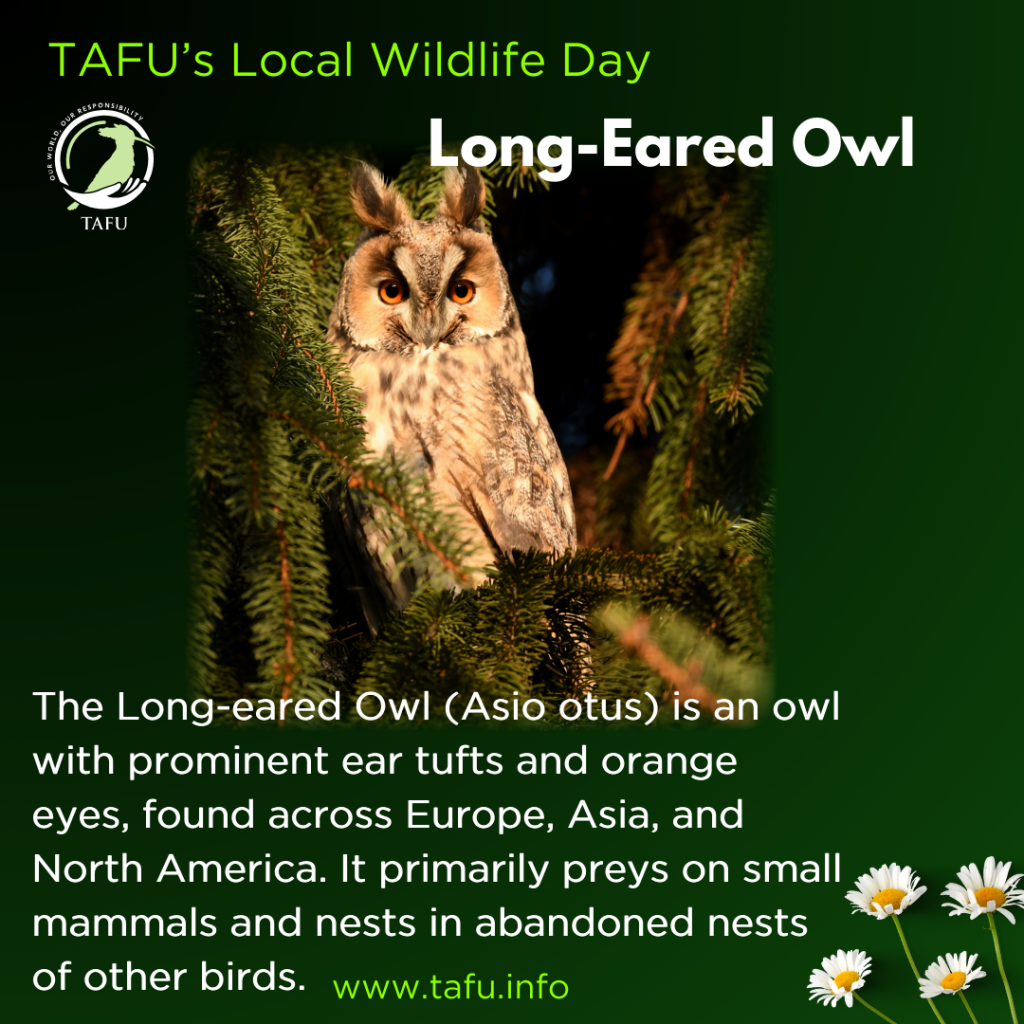Long-eared Owl
As part of the countdown to TAFU’s Local Wildlife Day on the 11th of July – Species no. 31.
Stay tuned – 12 more days and 12 more species until then!
The Long-eared Owl (Asio otus) is a medium-sized owl, measuring 31-40 cm in length with a wingspan of 95 cm. It is characterised by its long ear tufts, which give it a surprised expression, and its striking orange eyes. Its plumage is mottled brown and grey, providing excellent camouflage against tree bark.
Long-eared Owls are primarily nocturnal, roosting in dense foliage during the day and hunting over open ground at night. Its diet mainly consists of small mammals, particularly voles, but it can adapt to various prey depending on availability.
Long-eared Owls are known for their communal roosting behaviour, especially in winter when they can be found in large groups. They do not build their own nests but use abandoned nests of other birds like crows and magpies. The female lays 3-4 eggs, which are incubated for 25-30 days.
At about 3 weeks old, owlets begin to explore the nest and its surroundings and are able to fledge at 5 weeks. However, they still rely on being fed by both parents for up to 2 months, which is one of the reasons why long-eared owls often only have 1 brood a year, sometimes two.
These owls are partially migratory, with northern populations moving south in winter. In the UK, they breed in various habitats, including woodlands, farmlands, and wetlands, with fewer numbers in the southwest and Wales.
Despite being widespread and numerous, Long-eared Owls face threats from habitat loss and predation by larger birds of prey. Conservation efforts focus on protecting their habitats and understanding their population dynamics.
Hence, it is important to keep our green areas natural to provide shelter, food, and nesting sites for these bird. As they are near the top of the food chain, it is also very important to help the whole ecosystem thrive to allow Long-eared Owls to thrive as well.

